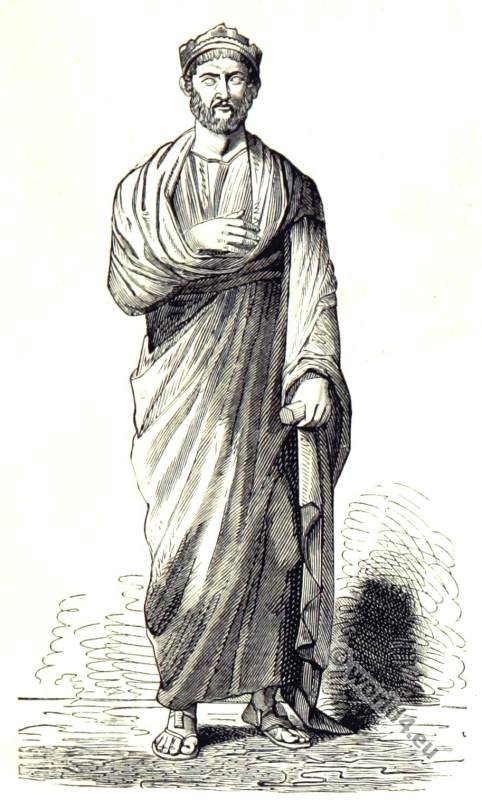
An Augur.
Roman Auguries. They have existed since the foundation of Rome and exercise a practice derived from the Greeks and Etruscans, the Etruscans disciplina. According to tradition, the Etruscans received the art of divination from Tarchies, God of Wisdom, son of Tinia.
An augur was a Roman official who had to find out whether a venture planned by the state or by a pater familias (head of the family) was acceptable to the gods. He proclaimed the will of the gods which he read at the augurium from the flight and the cries of the birds and other animals (Auspicium, from Latin auspicium “bird show”). Titus Livy 1) reports that it was well known that in Rome no decision was made in war and peace without first consulting the Augur.
The Augur is in the Roman sense no priest (sacerdos), thus no official with the task to accomplish sacrificial ceremonies. However, the augurat could be taken over by priests in the sense of an office accumulation. The sign of the augurs was a crosier (lituus).
The Augur referred with the crook to a quadrangular area in nature, the so-called templum, which – sometimes oriented to the east – was used for observation. Here the Augur exercised the contemplatio, that is, he paid attention to the different signa (“signs”). Among the signa there were two main classes, the auguria impetrativa (“requested signs”) and the auguria oblativa (“unfavorable signs”). Furthermore, there were five different types of signs, one of which was ex quadripedibus (“from the quadrupeds”), indicating that the restriction to birds was a narrowing of later times.
The augurs were organized in a priestly college that had allegedly been founded by Romulus or Numa Pompilius. Originally, the priesthood was there to request an increase in the harvest or an increase in the welfare of the state. Later the Etruscan haruspices, the liver interpreters, took over the function of the augurs.
1) Titus Livy (Latin Titus Livius; Patavium, today Padua, 59 B.C. – Patavium, 17 A.D.) was a Roman historian, author of the Ab Urbe condita, a story of Rome from the foundation to the death of Drusus, the stepson of Augustus, in 9 B.C.
Source: L’antique Rome, ou, Description historique et pittoresque de tout ce qui concerne le peuple romain, dans ses costumes civiles, militaires et religieux, dans ses moeurs publiques et privées depuis Romulus jusqu’à Augustule: ouvrage orné de cinquante tableaux by Jacques Grasset de Saint-Sauveur. Paris: Chez Deroy, libraire, rue du Cimetière-André, no. 15, près la rue Haute-feuille, et chez les principaux libraires de la République 1796.
Related
Discover more from World4 Costume Culture History
Subscribe to get the latest posts sent to your email.






